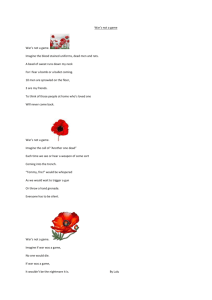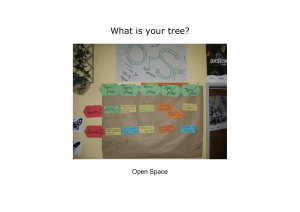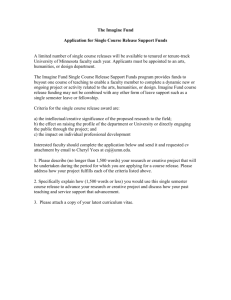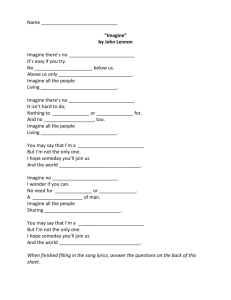Using a number line and the expression `Imagine if …`
advertisement
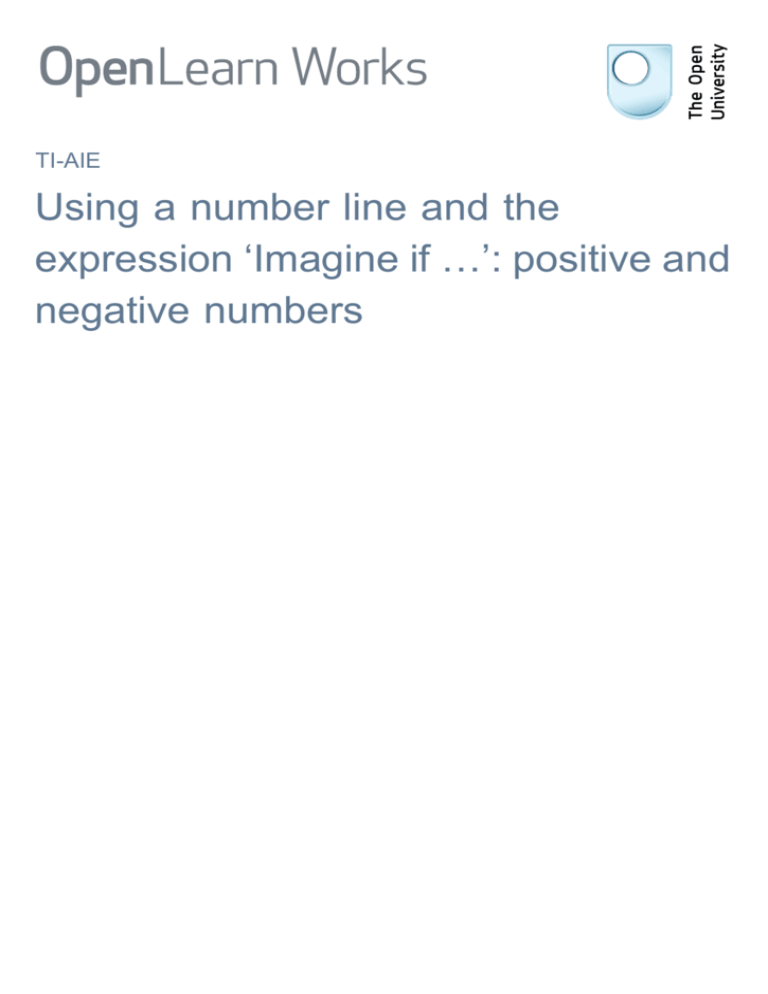
Open Learn Works TI-AIE Using a number line and the expression ‘Imagine if …’: positive and negative numbers Using a number line and the expression ‘Imagine if …’: positive and negative numbers Elementary Maths Elementary Maths Using a number line and the expression ‘Imagine if …’: positive and negative numbers 2 of 6 Wednesday 27 May 2015 Using a number line and the expression ‘Imagine if …’: positive and negative numbers Elementary Maths Contents What this unit is about What you can learn in this unit 1 The meaning of numbers 4 4 4 3 of 6 Wednesday 27 May 2015 Using a number line and the expression ‘Imagine if …’: positive and negative numbers What this unit is about What this unit is about In this unit you will explore ways to encourage your students to think about the meaning of numbers and why the concept of ‘negative numbers’ was developed. Students first meet the minus sign when it is used to indicate the mathematical operation of subtraction; therefore, careful introduction to its use in negative numbers will be needed. Explaining that the sign is used differently and exploring why it is used for negative numbers will help your students to recognise and understand the similarities and differences in using this sign. Through the activities in this unit you will also think about developing the use of a number line to help your students visualise the movements indicated by positive and negative numbers. Actually making those movements themselves will further help the students understand what is meant by ‘positive’ and ‘negative’. The value of saying ‘Imagine if …’ to trigger imagination when teaching mathematics is also explored. What you can learn in this unit l Some ideas to help your students understand the difference between positive and negative numbers. l The role of saying ‘Imagine if …’ to trigger the imagination of your students when learning mathematics. l How to use a number line to understand positive and negative numbers. This unit links to the teaching requirements of the NCF (2005) and NCFTE (2009) outlined in Resource 1. 1 The meaning of numbers Numbers were probably invented for the purpose of counting animals or other possessions. Numbering systems were originally thought to only have words for ‘one’, ‘two’ and ‘many’, as that was all that was needed. Further developments allowed herds to be counted, and as trade between people increased, the number system we use today was developed – including zero and negative numbers. Number names are almost always structured using a logical procedure so that they can express numbers that are to all intents and purposes, infinite. Numbers are used to represent: l quantity, for answering questions like ‘How many?’ or ‘How far?’ l relationships between numbers, for answering questions like ‘How many more?’ or ‘How many less?’ l transformations in terms of quantities, for answering questions like ‘Imagine if Zuree owed Mary three rupees. She gave Mary one rupee. How much does she owe now?’, 4 of 6 Wednesday 27 May 2015 Using a number line and the expression ‘Imagine if …’: positive and negative numbers 1 The meaning of numbers or ‘Manu won three marbles in the first match and lost five marbles in the second. How many marbles did he lose altogether?’ 5 of 6 Wednesday 27 May 2015 Using a number line and the expression ‘Imagine if …’: positive and negative numbers 1 The meaning of numbers 6 of 6 Wednesday 27 May 2015
